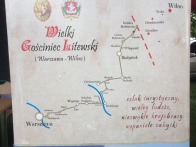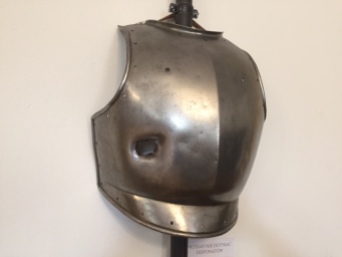“A perfect cook” [Kucharz dostkonały] is the title given to one of the oldest cookbooks published in Polish whose author, Wojciech Wielądko, was born in a small village located on the ancient road from Warsaw to Vilnius, a little more than one-hour drive from Warsaw.
Truth be told, Wielądko’s book was a translation from the Cuisinière bourgeoise by Menon, an extremely popular French food author from the 18th century. Nevertheless, it has gained a lot of publicity in Poland since it was published in 1783. The village itself is known only to the few people researching the history of the Polish cuisine, but in its vicinity you will find some very interesting and less touristically explored sites such as Liw and Węgrów.
If you are into local food and festivals then you should visit Liw during the annual international food fair, as I did in June. It was a delicious and illuminating culinary journey along the old trail to Lithuania. Tinctures (nalewka), vodkas, sausages made from boar or deer, honey and local versions of baked dumplings or buns called sójka – jay-like little birds. And my absolute favourite: potato tart or cake…. these were just a few delicacies I was able to taste.
Today the once mighty castle in Liw looks like a charming postcard of late medieval ruins. Originally built by the Dukes of Mazovia to protect the eastern border of their land, it was then destroyed in the 17th and 18th century. The castle was never restored to its former glory, but a new, smaller manor house was built on the site for local administration some 250 years ago. Today, you can visit it and discover a collection of weapons from different times and wars. The Liw Castle and its armoury has become a meeting place for the Polish re-enactment groups that organise annual tournaments there. The 2017 edition is scheduled for Aug 12th.
Nearby Węgrów is a perfect example of a multi-cultural town that was typical for Poland until WWII. Today you can visit an impressive Baroque Roman Catholic Basilica church and an original wooden Protestant church from 1679 (one of the oldest in Mazovia), while on a local Protestant cemetery you will find tombs of Scottish weavers who lived in the town more than 300 years ago. Last but not least, there was a Jewish community, and today you will find a house in the centre that, according to tradition, belonged to local rabbis, and the Memorial to Jewish population killed during WWII.
And there is more to see and learn in Węgrów as there is a mirror used by the most notorious Polish wizards Jan Twardowski in his necromantic rituals. It is believed that one of the Polish kings asked his help to talk to his dearly beloved but sadly dead wife. The ritual was undertaken in the Royal Castle in Warsaw and according to the legend, it was successful. What is more, according to another old legend, Napoleon Bonaparte did see a devil in the mirror reflection so it is placed rather high over the sacristy doors to prevent anyone else from gazing into it. For many centuries the corpse of Twardowski the wizard was kept in the church as it was impossible to bury him. Apparently, the soil refused to let him rest due to his magic!
Our service
We provide a guide and on request we can assist you with picnic, lunch or dinner booking in one of the local inns or agritourism farms. Węgrów and Liw are situated at 30 minutes’ driving distance from Treblinka, so you can get there after visiting the Holocaust Memorial.













